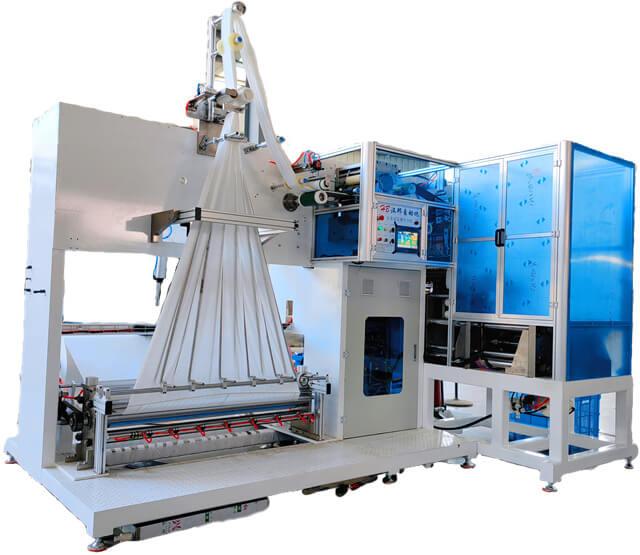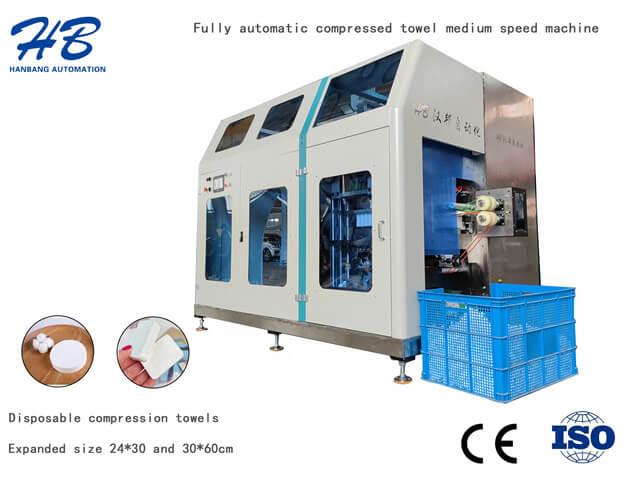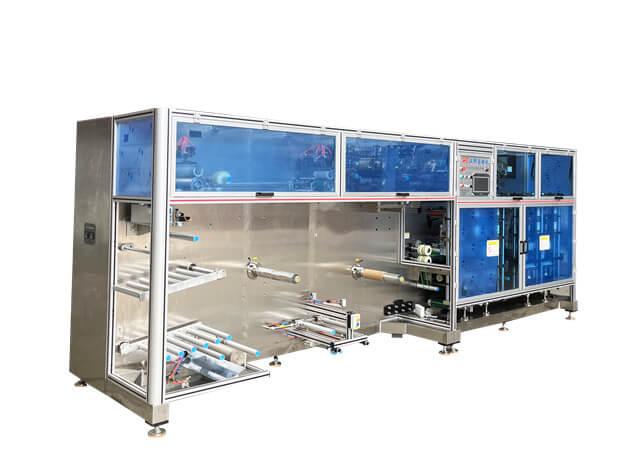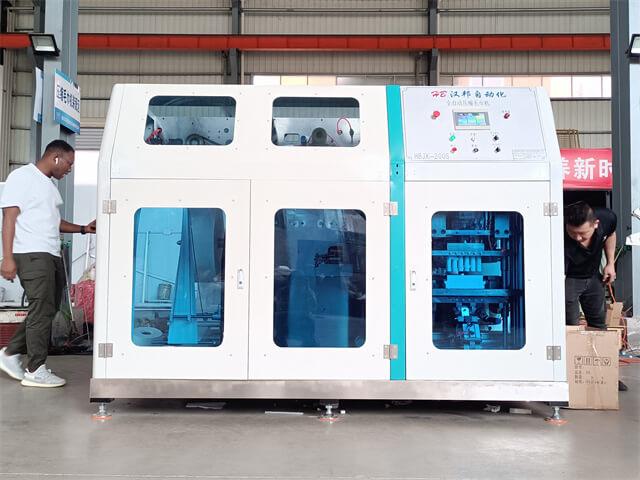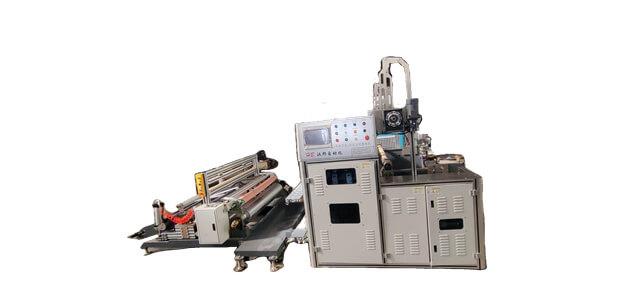Author:HB Nonwoven MachineryFROM:Compressed Towel Machine Manufacturer TIME:2023-10-21
Non woven fabric cutters play a crucial role in the hygiene products industry, especially in the production of diapers and sanitary napkins. These cutters are designed to precisely and efficiently cut non woven fabrics, which are an essential component of these products. In this article, we will explore the various applications of non woven fabric cutters and their significance in the industry.
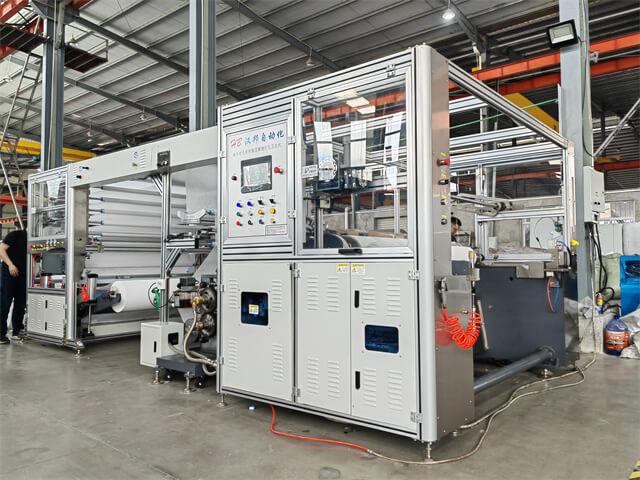
One of the primary applications of non woven fabric cutters is in diaper production. Diapers are made up of multiple layers of different materials, including non woven fabrics. The cutter is used to accurately cut these fabrics into the required shapes and sizes for different components of the diaper, such as the absorbent core, outer cover, and fastening tabs. The precision of the cutter ensures that each piece fits together perfectly, resulting in high-quality diapers.
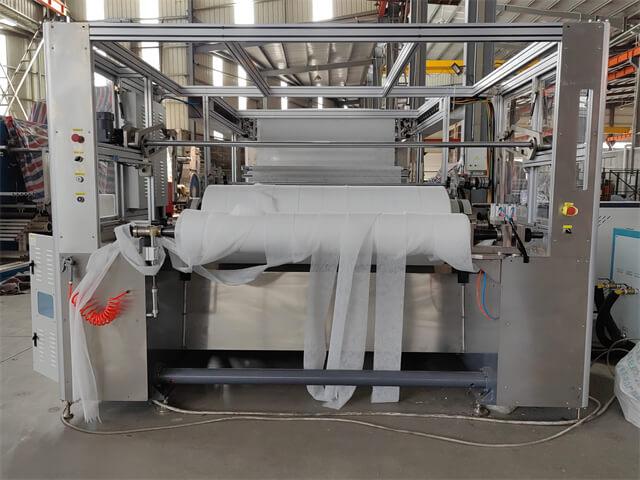
The manufacturing of sanitary napkins also relies heavily on non woven fabric cutters. Similar to diapers, sanitary napkins consist of layers of different materials, with non woven fabrics being a significant component. The cutter is utilized to cut the non woven fabrics into precise shapes for the absorbent core, top layer, and backsheet of the napkin. By ensuring accurate cuts, the cutter helps maintain the integrity and functionality of the final product.
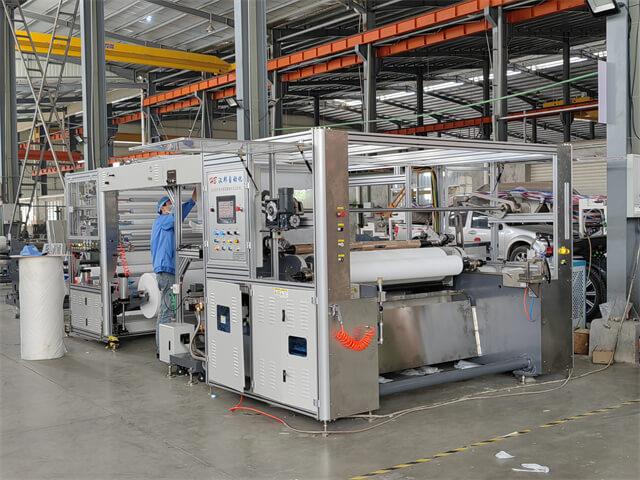
Non woven fabric cutters contribute to the efficiency and productivity of the hygiene products industry. With their high-speed cutting capabilities, these machines can process large volumes of fabric in a short period. This allows manufacturers to meet the demand for diapers and sanitary napkins effectively. Additionally, the precise cutting eliminates the need for manual trimming, reducing labor costs and improving overall productivity.
The use of non woven fabric cutters also helps minimize material waste in the production process. These cutters are designed to minimize fabric remnants and offcuts. By optimizing the cutting patterns and reducing unnecessary trimmings, the cutters ensure that manufacturers make the most efficient use of the non woven fabric. This not only saves costs but also promotes sustainability by reducing environmental impact.
Non woven fabric cutters offer customization and flexibility in the production of hygiene products. With adjustable settings, manufacturers can easily change the cutting dimensions and patterns to meet specific product requirements. Whether it's different sizes of diapers or varying shapes of sanitary napkins, the cutters can accommodate diverse customization needs, allowing manufacturers to cater to a wide range of consumer preferences.
The precision and quality of non woven fabric cutters contribute significantly to the final output of hygiene products. By maintaining consistent cutting precision, these cutters ensure that all components of diapers and sanitary napkins fit together seamlessly. This leads to products that are comfortable, leakage-resistant, and reliable. The accuracy of the cutter also enhances the overall quality and aesthetics of the finished products, enhancing customer satisfaction.
Non woven fabric cutters continue to evolve with advancements in technology and market demands. Manufacturers are constantly exploring new cutting techniques, materials, and features to improve efficiency and product performance. As the demand for eco-friendly hygiene products grows, the industry is witnessing the development of cutters capable of handling sustainable materials. This innovation drives growth and competitiveness within the industry.
In the future, non woven fabric cutters are expected to become even more advanced and efficient. Automated cutting processes, integration with artificial intelligence, and improved energy efficiency are some of the areas that will likely see progress. Additionally, the emphasis on sustainability and eco-friendly materials will continue to shape the development of these cutters, ensuring a greener and more sustainable future for the hygiene products industry.
Non woven fabric cutters are indispensable in the production of diapers and sanitary napkins, providing precision, efficiency, and customization. Their role in reducing material waste, enhancing product quality, and driving innovation cannot be understated. As the industry progresses, these cutters will continue to play a vital part in meeting consumer demands for reliable, comfortable, and sustainable hygiene products.
